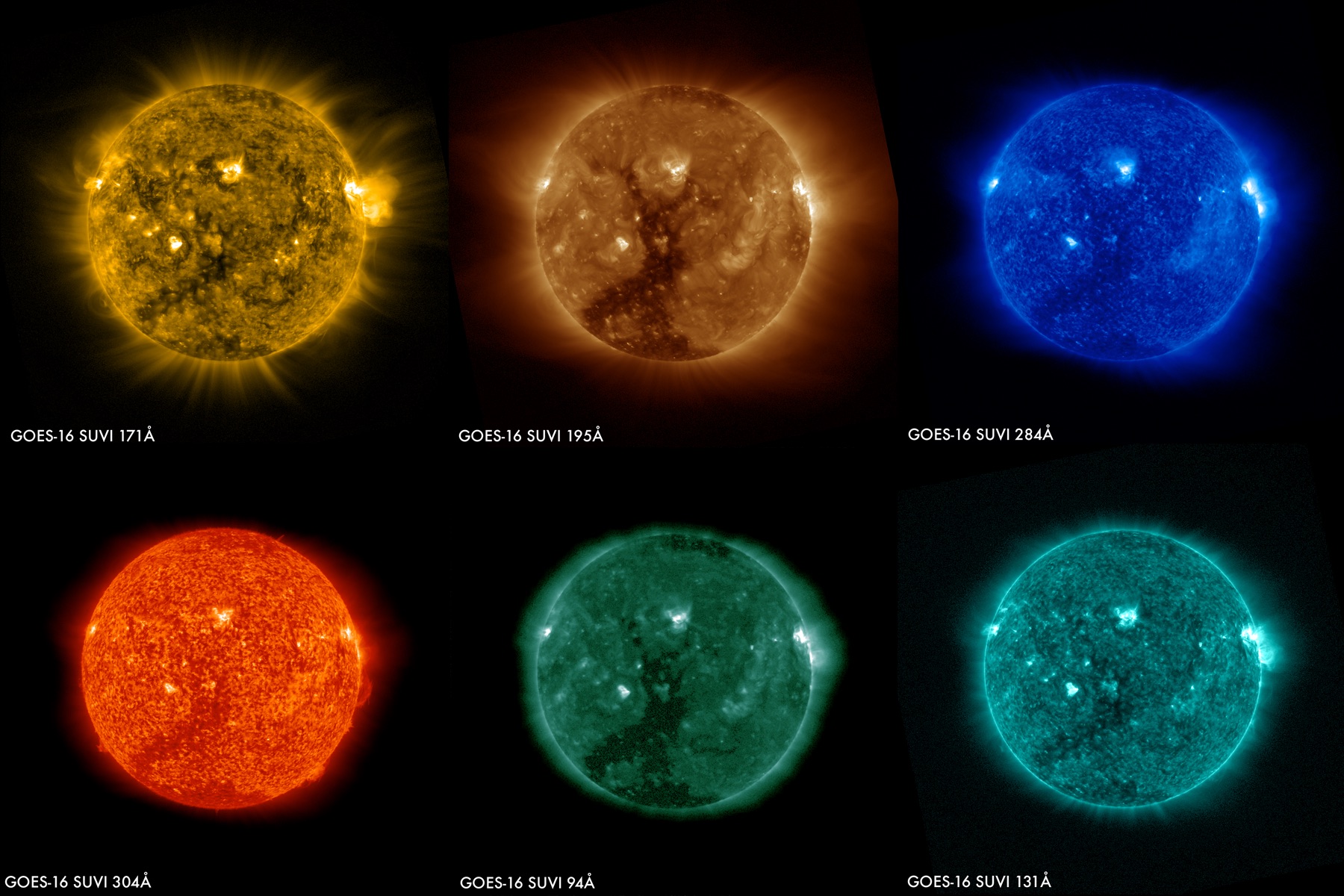A Hole in the Sun's Atmosphere: The 1st Solar Views from New Satellite
A sun imager aboard the GOES-16 satellite captured its first, vivid images, showing a "hole" in the sun's hot upper atmosphere, called the corona.
The sun is reaching a minimum in its 11-year-cycle of activity. As a result, solar flares and the associated coronal mass ejections, which send charged particles into space that sometime collide with Earth, are also at a minimum right now.
This means that coronal holes are the primary space weather phenomena, NASA officials said. The one imaged by the National Oceanic and Atmospheric Administration's satellite on Jan. 29 caused auroras to appear on Earth. [The Earth & Sun from Space: Amazing Photos by GOES-16]
"Coronal holes are areas where the sun's corona appears darker because the plasma has high-speed streams open to interplanetary space, resulting in a cooler and lower-density area as compared to its surroundings," NASA officials said in a statement.
The satellite's new images were captured by the Solar Ultraviolet Imager (SUVI), a telescope that looks at the sun in the extreme ultraviolet wavelength range. The telescope is designed to watch the entire solar disk 24 hours a day to provide frequent updates on solar activity.

At times, the sun's activity is so intense that it can cause power outages or satellite disruptions, so NASA and other entities keep an eye on it to make better predictions about when solar activity will next affect Earth.
"Data from SUVI will provide an estimation of coronal plasma temperatures and emission measurements, which are important to space weather forecasting," NASA officials said.
Get the Space.com Newsletter
Breaking space news, the latest updates on rocket launches, skywatching events and more!
The corona is best seen in X-ray or extreme ultraviolet wavelengths because it is so hot, they added. There are different elements in the corona that emit light in different wavelengths, so an instrument able to view multiple wavelengths is used to get a full picture of solar activity.
The corona is made up of hot plasma, or ionized gas, which interplays with the sun's magnetic field. These interactions create coronal loops, which are heated to millions of degrees, as well as darker regions called filaments, which can erupt at times of high solar activity, and coronal holes.
"[Coronal holes] occur where the sun's magnetic field allows plasma to stream away from the sun at high speed," NASA officials added. "The effects linked to coronal holes are generally milder than those of coronal mass ejections, but when the outflow of solar particles is intense — [they] can pose risks to satellites in Earth orbit."
SUVI is the next generation of technology after the GOES Solar X-ray Imager instrument, which was used in previous GOES satellites. GOES-16 was launched on Nov. 19, 2016. Originally, it was called GOES-R, but was renamed to GOES-16 when it reached orbit successfully. GOES-16 orbits about 22,300 miles (35,900 kilometers) above Earth's surface.
Follow Elizabeth Howell @howellspace, or Space.com @Spacedotcom. We're also on Facebook and Google+. Original article on Space.com.
Join our Space Forums to keep talking space on the latest missions, night sky and more! And if you have a news tip, correction or comment, let us know at: community@space.com.

Elizabeth Howell (she/her), Ph.D., was a staff writer in the spaceflight channel between 2022 and 2024 specializing in Canadian space news. She was contributing writer for Space.com for 10 years from 2012 to 2024. Elizabeth's reporting includes multiple exclusives with the White House, leading world coverage about a lost-and-found space tomato on the International Space Station, witnessing five human spaceflight launches on two continents, flying parabolic, working inside a spacesuit, and participating in a simulated Mars mission. Her latest book, "Why Am I Taller?" (ECW Press, 2022) is co-written with astronaut Dave Williams.









